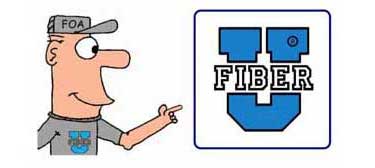Lesson:
Stripping And Examining UTP Cable
Objectives:
From this lesson you should learn:
How to use these tools to strip cable to the bare wires
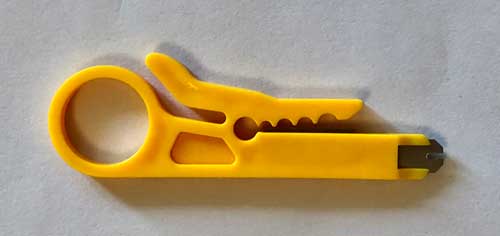
Tools:
Cable Stripper
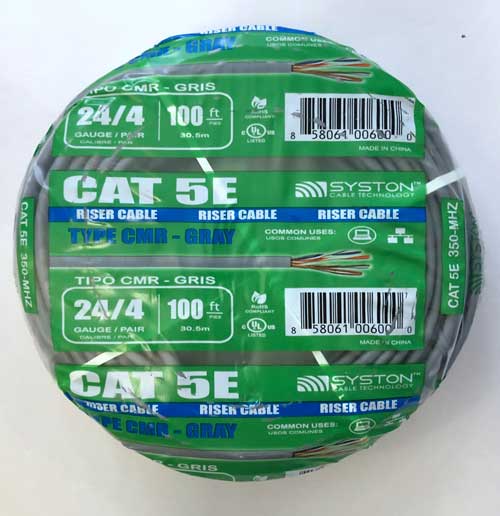
Components:
UTP cable
Safety:

|
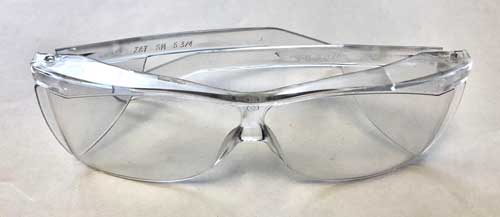
Always
wear safety glasses when doing any of
these exercises and dispose of all fiber
scraps properly.
Safety
Rules - Read before beginning any
exercises.
|
Exercise
1: Use a short length of the Cat 5e cable for this
exercise
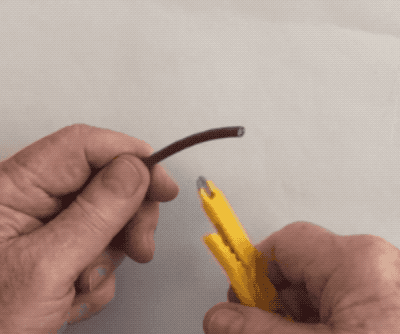
2. Remove ~50mm / 2" of the jacket with the cable
stripping tool. Slide the cable into the slot, move the
tool around the cable and pull off the jacket.
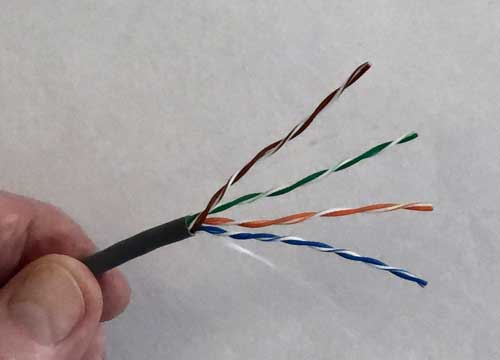
3. Examine the pairs. Note the colors - arrange them as
shown, blue pair, orange pair, green pair, brown pair.
Note one of the pair of wires is solid colored and one has
a color stripe. This is the universal color code for
4-pair UTP cable and is used to arrange wires for proper
terminations.
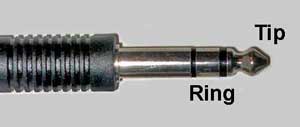
Trivia: The striped wire in the pair is known as
"tip" and the solid wire as "ring" - that's from the
original telephone plug used to connect phone wires on a
switchboard. The striped wire went to the tip of the plug
and the solid wire to the ring contact behind the tip.
4. Also
note the different twist rates of the pairs - it's subtle
- but that is what is used to reduce crosstalk between the
pairs by changing their natural frequencies.
You
have successfully completed this exercise when you
have been able to strip the cable and identify the
color codes.
Clean up all your fiber
scraps and dispose of them in a container like a used
take-out coffee cup marked "Scraps"!
After successfully stripping cable several times, fill
in your Scorecards
(PDF).
Lessons and
Exercises
Click on the links for each exercise. Download the Scorecards
to keep records of your completion of each exercise.
1. UTP Cable
2. Terminating
UTP Cable with modular 8-pin plugs
3. Terminating
UTP Cable with modular 8-pin jacks
4. Testing
- wiremapping patchcords and links
Return
to Lesson Plan
This information is
provided by The Fiber Optic Association, Inc. as a
benefit to those interested in teaching, designing,
manufacturing, selling, installing or using fiber optic
communications systems or networks. It is intended to be
used as an overview and/or basic guidelines and in no
way should be considered to be complete or
comprehensive. These guidelines are strictly the opinion
of the FOA and the reader is expected to use them as a
basis for learning, as a reference and for creating
their own documentation, project specifications, etc.
Those working with fiber optics in the classroom,
laboratory or field should follow all safety rules
carefully. The FOA assumes no liability for the use of
any of this material.
|
